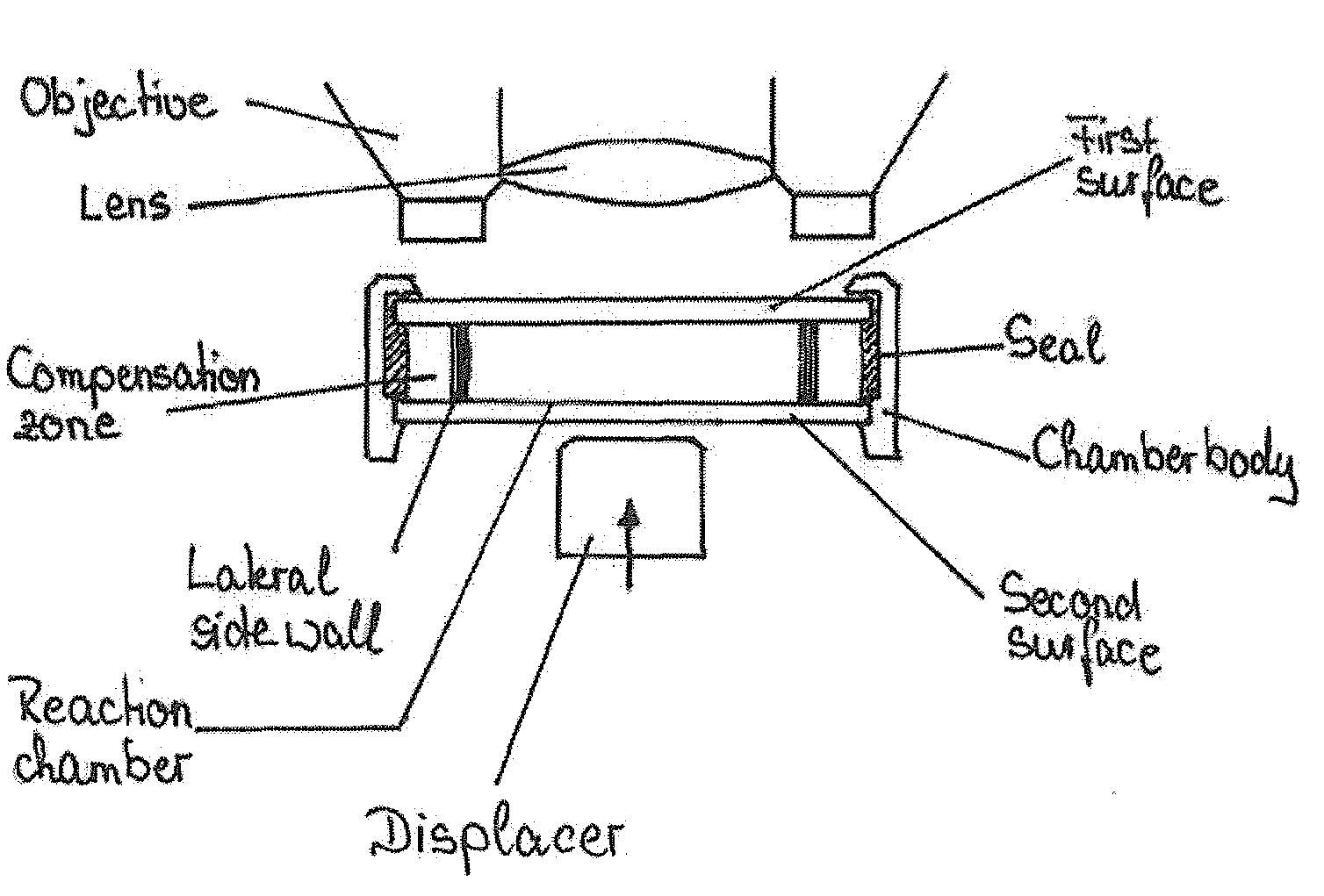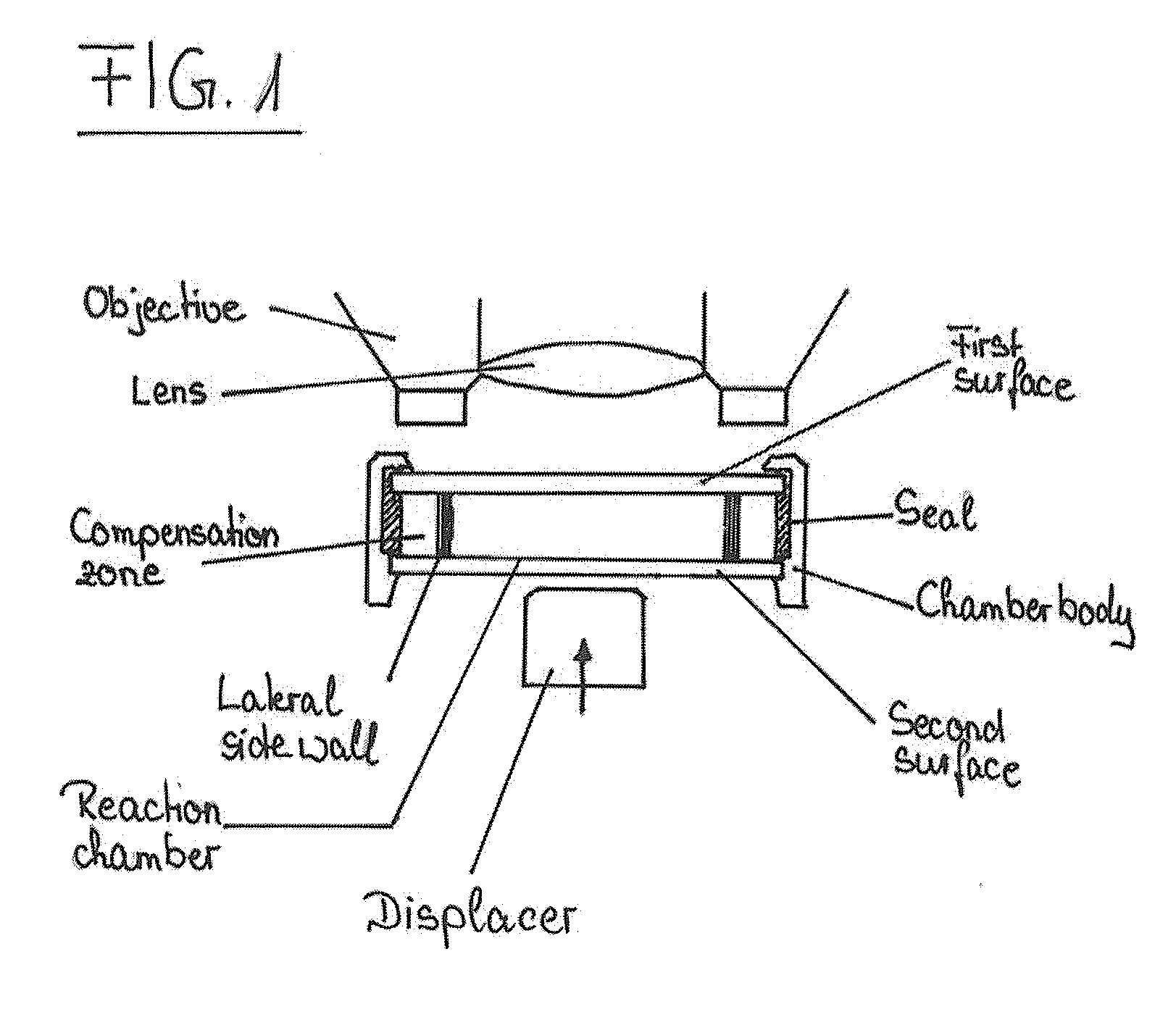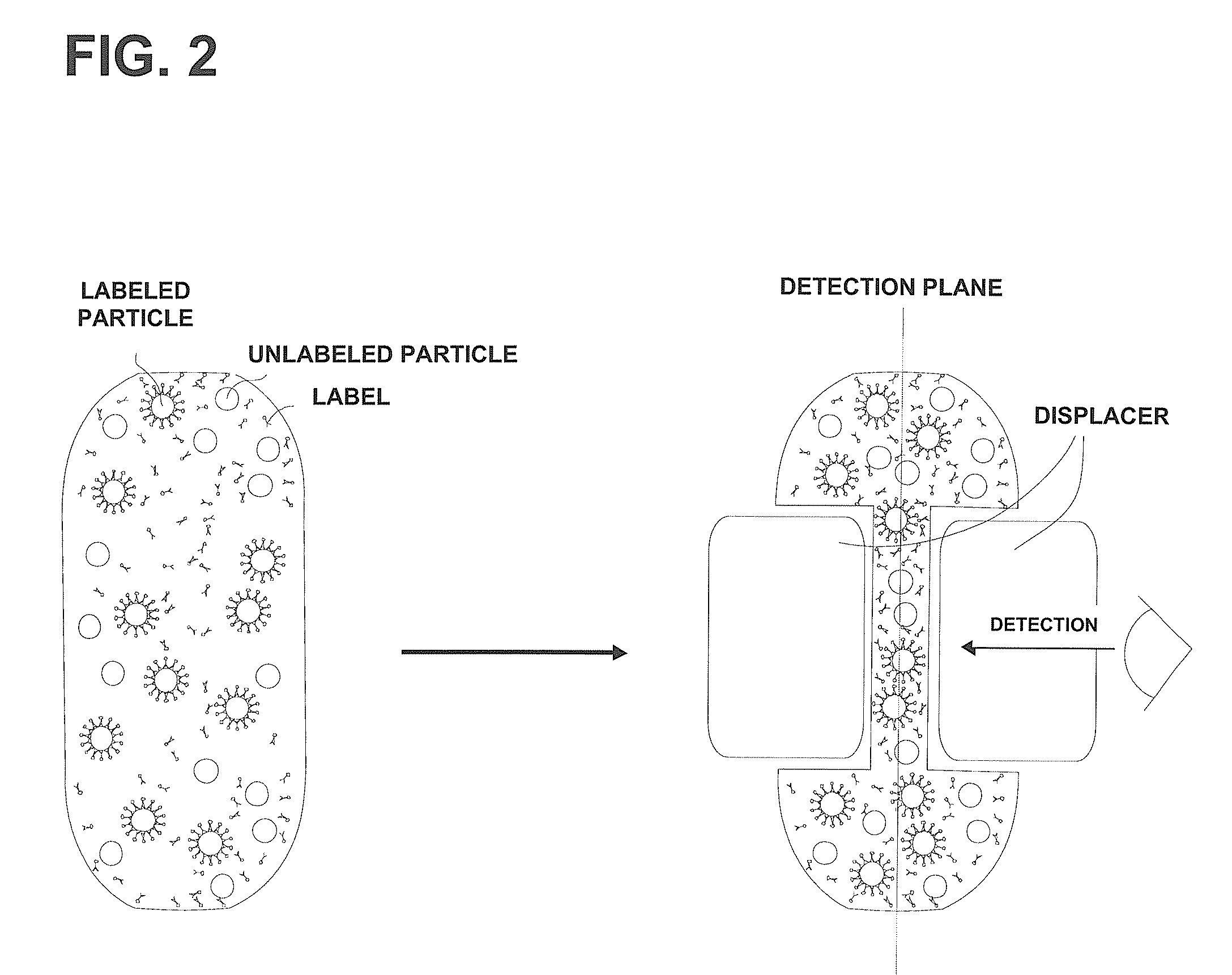Device and method for the detection of particles
a technology for particle detection and detection chambers, applied in the field of devices and methods for particle detection, can solve the problems of difficult “on-site” measurement (e.g. bedside testing), high analysis cost, and small analytical instruments based on these efforts, and achieve the effect of reducing the distance between the first and second walls and reducing the volume of the detection chamber
- Summary
- Abstract
- Description
- Claims
- Application Information
AI Technical Summary
Benefits of technology
Problems solved by technology
Method used
Image
Examples
example 1
Determining the Presence of CD4+ Cells in Human Blood
[0155]The CD4+ cells of a human blood sample were labeled with anti-CD4 phycoerythrin-conjugated monoclonal antibody (CD4-PE) using the CD3CD4 kit (GE Healthcare Life Sciences, Heidelberg, Germany) according to the instructions of the manufacturer. In brief, 10 μl blood were mixed with 2 μl CD4-PE (1:25 diluted stock solution) and 2 μl 20 mM EDTA. Then, the mixture was incubated for 15 min in the dark.
[0156]The blood sample was diluted to a concentration of less than 500 cells / μl (a higher concentration would interfere with proper handling of the device) and analyzed in a reaction chamber configured as a capillary channel that is made of polydimethylsiloxane, i.e. an elastically deformable material. The reaction chamber is 2.048 mm×0.04 mm×24 mm in size and thus has a total volume of approximately 2 μl.
[0157]For introducing the sample 2.5 μl of the diluted blood sample were placed adjacent to the opening of the channel and introdu...
example 2
Comparison of Flow Cytometry and an Inventive Assay for Determining the Number of CD4+ Cells in Human Blood
[0160]In order to test the suitability of the inventive assay for quantitative analyses it was compared to conventional flow cytometry for determining CD4+ cell numbers in human blood. The CD4+ cells of a human blood sample were labeled as described in Example 1. Samples were analyzed using a Guava PCA flow cytometer (Guava Technologies, Inc., Hayward, Calif., USA; excitation wavelength: 532 nm, emission wavelength: 580-583 nm) according to the manufacturer's instructions as well as by an inventive assay as described in Example 1. The results are shown in FIG. 6 and represent mean values±SEM of 5-7 measurements. The results are expressed as numbers of CD4+ cells per μl blood.
[0161]The mean values obtained for the two methods as well as the respective differences in percent are also summarized in the following table.
Assay no.Mean FlowMean AssayΔ [%]1123411149.782120813309.143121...
PUM
 Login to View More
Login to View More Abstract
Description
Claims
Application Information
 Login to View More
Login to View More - R&D
- Intellectual Property
- Life Sciences
- Materials
- Tech Scout
- Unparalleled Data Quality
- Higher Quality Content
- 60% Fewer Hallucinations
Browse by: Latest US Patents, China's latest patents, Technical Efficacy Thesaurus, Application Domain, Technology Topic, Popular Technical Reports.
© 2025 PatSnap. All rights reserved.Legal|Privacy policy|Modern Slavery Act Transparency Statement|Sitemap|About US| Contact US: help@patsnap.com



